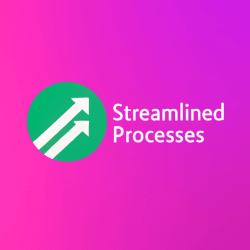For Subscription Payment Management, see our main page here.
Understanding the Purpose of Subscription Payment Management
At its core, Subscription Payment Management refers to the systems and strategies businesses use to handle recurring payments. These systems ensure continuous service delivery while keeping billing accurate and timely. Moreover, they minimize disruptions, helping maintain customer satisfaction and long-term value.
Companies in SaaS, streaming, and eCommerce often depend on subscriptions as a steady revenue stream. Without a solid management approach, they risk customer churn due to payment failures, poor communication, or disorganized invoicing.
Key Components That Make a Subscription Model Work
To manage subscriptions effectively, several elements must work together. These components streamline processes and help businesses grow sustainably.
- Customer Onboarding: A smooth sign-up process reduces friction and enables quick revenue capture.
- Billing Automation: Automatically generating invoices and charging customers saves time and prevents human error.
- Payment Processing: Reliable payment gateways ensure funds are received promptly and securely.
- Renewals and Upgrades: The ability to adapt plans keeps customers engaged and satisfied over the long term.
- Churn Mitigation: Tools like dunning emails or retry logic help recover failed payments.
In other words, Subscription Payment Management is not just billing—it’s a sophisticated workflow that supports customer retention and financial stability.
The Evolution of Subscription Payment Management
Historically, managing subscriptions was manual and prone to errors. Small teams tracked renewals using spreadsheets or basic databases. However, over the last decade, cloud solutions, AI, and fintech innovation have dramatically changed things.
For example, Stripe Billing and Chargebee now offer full suites for automating everything from invoicing to compliance. As a result, even small businesses can compete with enterprise-level service efficiency. This shift has lowered barriers and supported a global rise in subscription-based services, including meal delivery, digital learning, and health platforms.
Why Effective Subscription Payment Management Matters
When payment systems fail, so do relationships. Failed payments account for up to 30% of voluntary churn in some industries. Therefore, addressing them proactively is critical to sustaining predictable revenue.
In addition, a clean, easy payment experience enhances brand perception and boosts customer loyalty. For example, Netflix ensures uninterrupted playback by contacting users before cards expire. Similarly, B2B platforms often offer flexible billing cycles to suit varied client needs.
Most importantly, effective Subscription Payment Management reduces operational friction, cuts costs, and improves forecasting accuracy.
Choosing the Right Tools for Subscription Payment Management
There is no one-size-fits-all solution. The best tool depends on your business size, region, compliance needs, and technical integration preferences.
- Stripe Billing: Ideal for developers seeking customizable APIs.
- Recurly: Built for scaling, with strong dunning management.
- Chargebee: Great for finance teams with complex reporting needs.
- Paddle: Suitable for SaaS companies with global user bases.
- Zoho Subscriptions: Tailored for small to mid-sized businesses with other Zoho services.
So, before selecting a solution, consider integration capabilities, pricing structure, regulatory compliance (like PCI or VAT rules), and customer support responsiveness.
Common Challenges in Subscription Payment Workflows
Despite the benefits, businesses often encounter friction points. Fortunately, most of these issues are preventable or manageable.
- High Transaction Fees: Especially true for international payments or microtransactions.
- Payment Failures: Caused by expired cards, low funds, or gateway downtime.
- Complex Pricing Models: Tiered plans, add-ons, or discounts can confuse both systems and customers.
- Tax Compliance: Incorrect tax calculations can lead to penalties or customer mistrust.
Managing these requires teamwork between finance, development, and customer success teams. In some cases, automation can reduce the load significantly.
Automation and AI in Subscription Payment Management
AI-assisted billing engines now predict and prevent failed payments by learning from past user behavior. For example, intelligent retry systems adjust the timing and frequency of billing attempts based on customer patterns.
Moreover, automation handles tax regulations, multicurrency conversions, and invoice generation. This allows human teams to focus on more strategic work, such as pricing experiments or customer retention.
This article was created with the assistance of AI tools and reviewed by our team at Streamlined Processes LLC to ensure accuracy and relevance.
How Industry Leaders Handle Subscription Payment Management
Large corporations set high standards that others now follow. Consider Spotify: they use data science to personalize payment plans in emerging markets. Meanwhile, Amazon offers monthly or yearly billing based on customer flexibility and regional rules.
By applying tiered pricing, localized currency support, and proactive communication, these companies reduce friction and maximize lifetime value. Small businesses can mirror these strategies using subscription management tools and clear funnel design.
FAQ: Subscription Payment Management Explained
What causes most subscription payment failures?
Most failed payments result from expired cards, insufficient funds, or errors during authorization. Smart retry logic and notification emails can recover many of these issues without losing customers.
Can I manage recurring payments without third-party tools?
While it’s technically possible, it’s rarely efficient or secure. Manual handling increases errors and compliance risk. In contrast, using trusted platforms ensures robust fail-safes and faster scaling.
How often should I update my billing systems?
Ideally, quarterly reviews help align systems with users, tax updates, or business growth. Many businesses also conduct audits after major product or pricing changes.
Do customers prefer monthly or annual billing?
Both have their place. Monthly plans lower entry barriers, while annual options increase customer lifetime value. Offering both lets users choose what best suits their finances.
Future Trends in Subscription Payments
The future lies in flexibility and personalization. As competition grows, companies are moving toward usage-based billing and hybrid pricing models. For example, some SaaS products charge by data volume or feature access.
Meanwhile, AI will continue optimizing retry strategies and fraud prevention. Blockchain and digital wallets may also become standard parts of Subscription Payment Management, especially in underserved regions or privacy-sensitive industries.
Final Thoughts
Subscription Payment Management is about more than just collecting money. It’s a customer relationship strategy, a financial backbone, and a product enabler rolled into one. When done right, it unlocks consistent revenue, satisfied users, and scalable growth.
Follow us on Facebook here.

